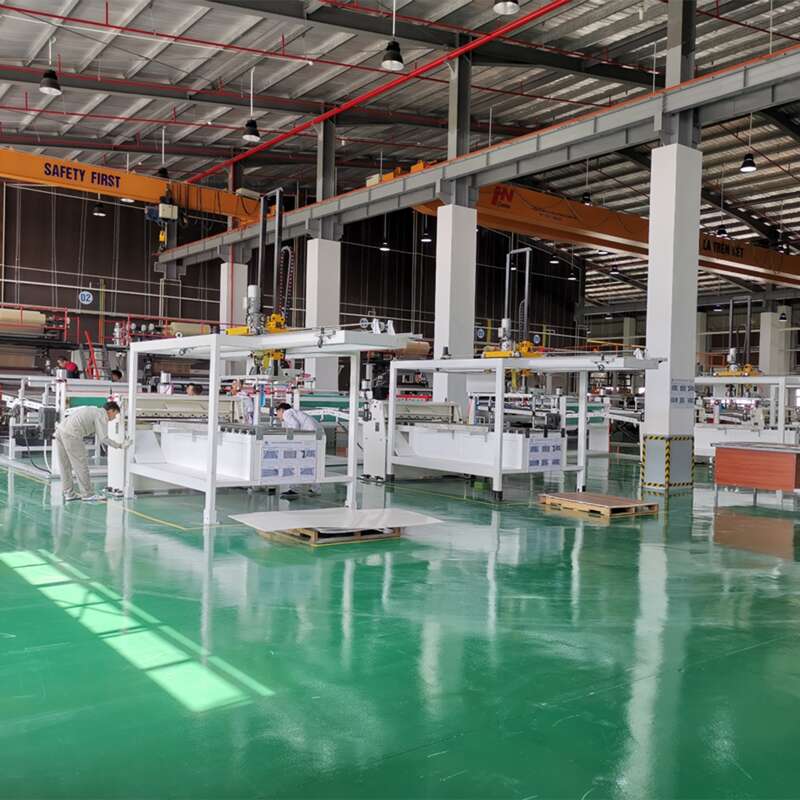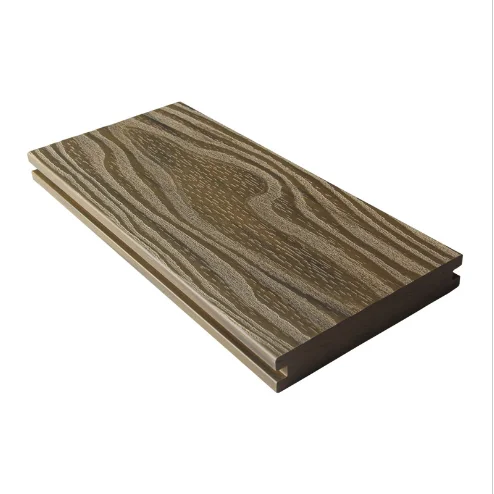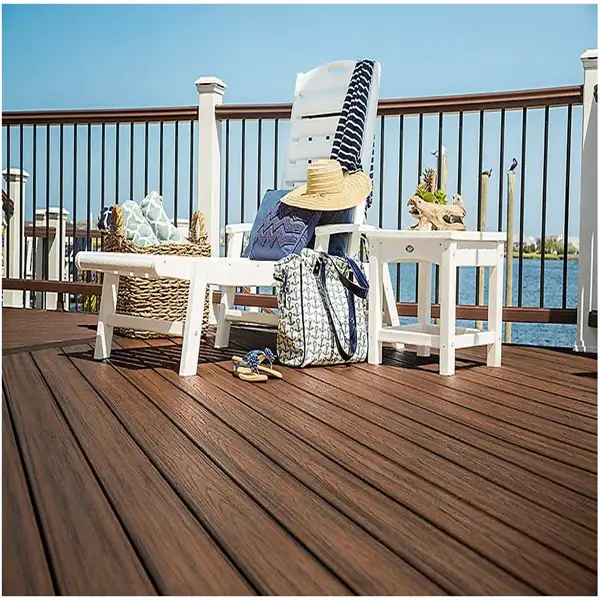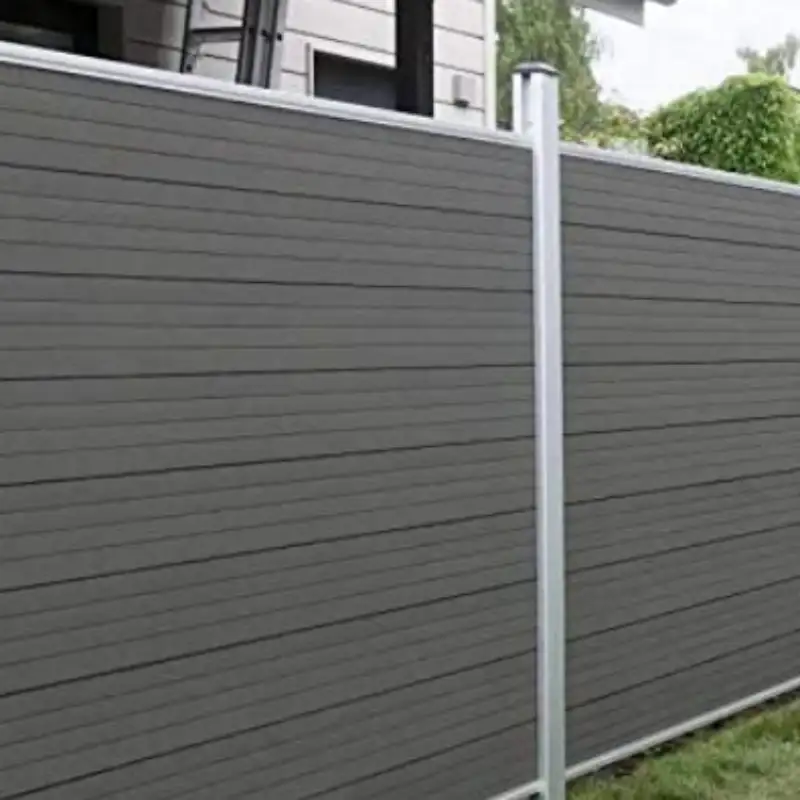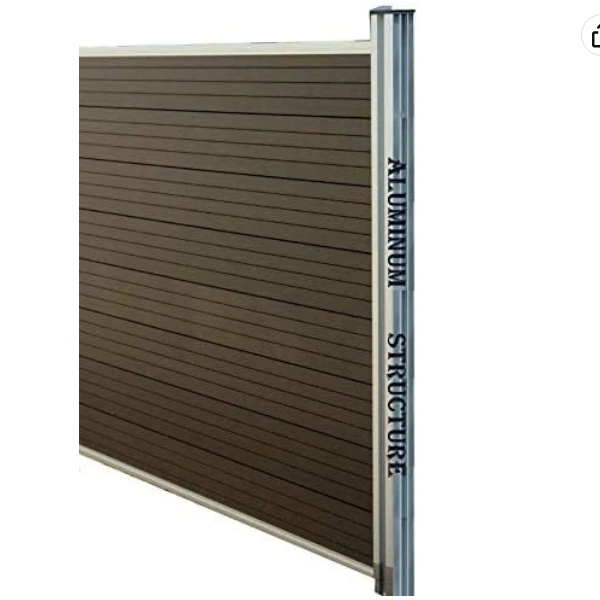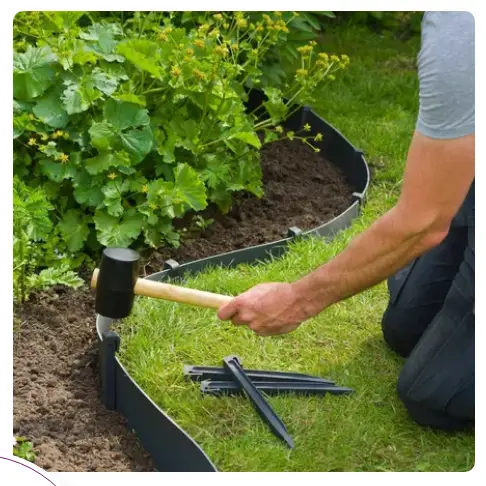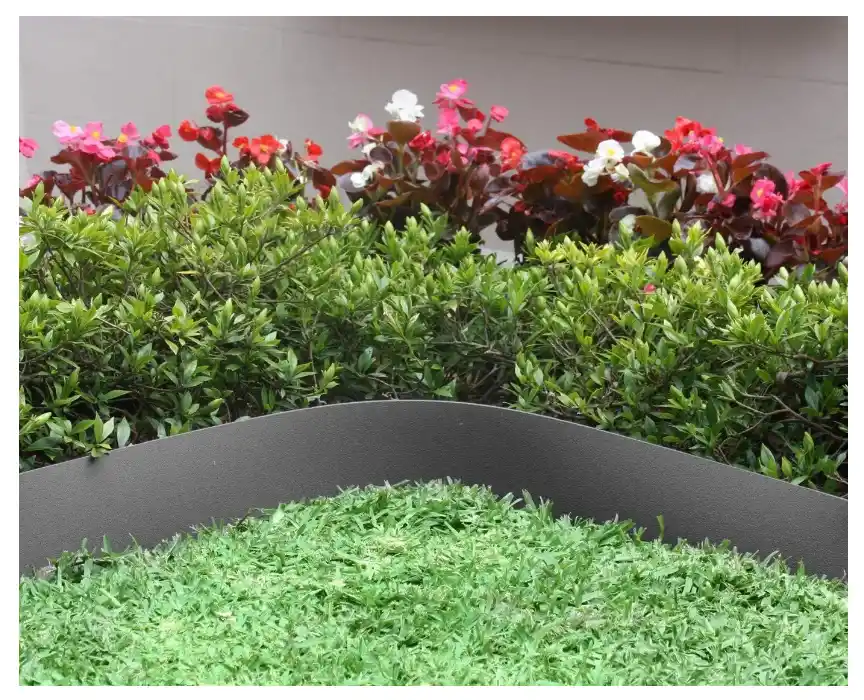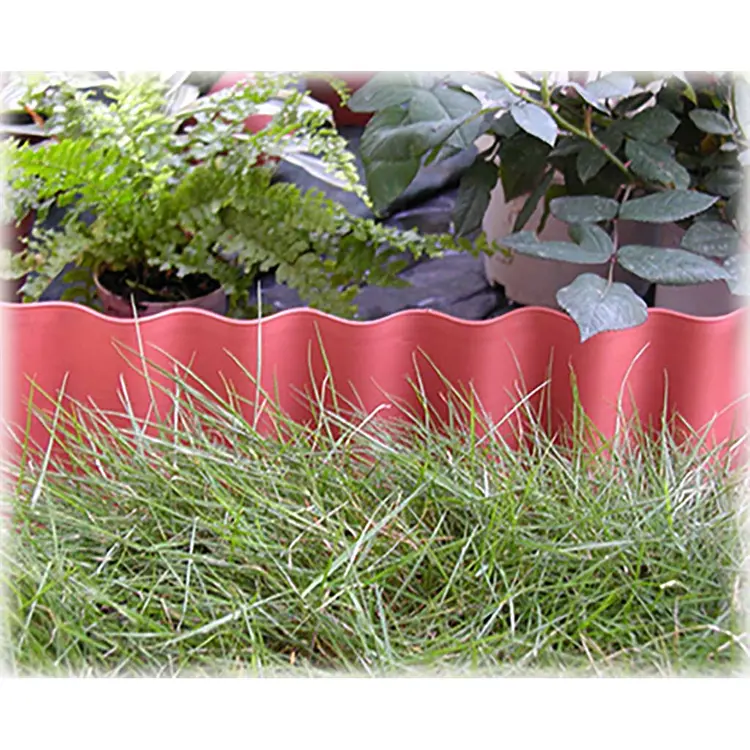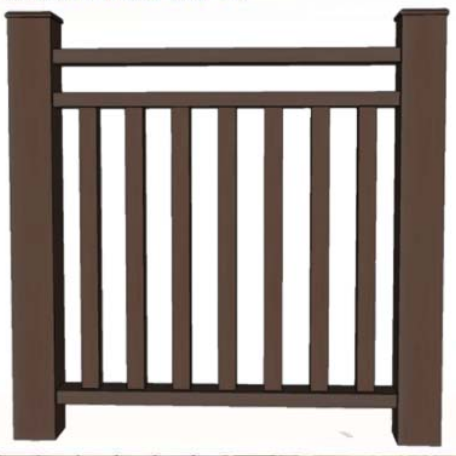![]() Wood plastic composite manufacturing process.docx
Wood plastic composite manufacturing process.docx
Depending on the processing method, WPC can be made into nearly any shape, so it can be used in a variety of applications, including windows, door frames, automotive interior panels, railings, fencing, landscape lumber, cladding and siding, park benches, molds and furniture.
Material:
Wood chips, plastics and additives
wood plastic manufacturing process
Manufacturing processes for wood-plastic composites are extrusion, injection molding and compression molding or thermoforming (pressing).
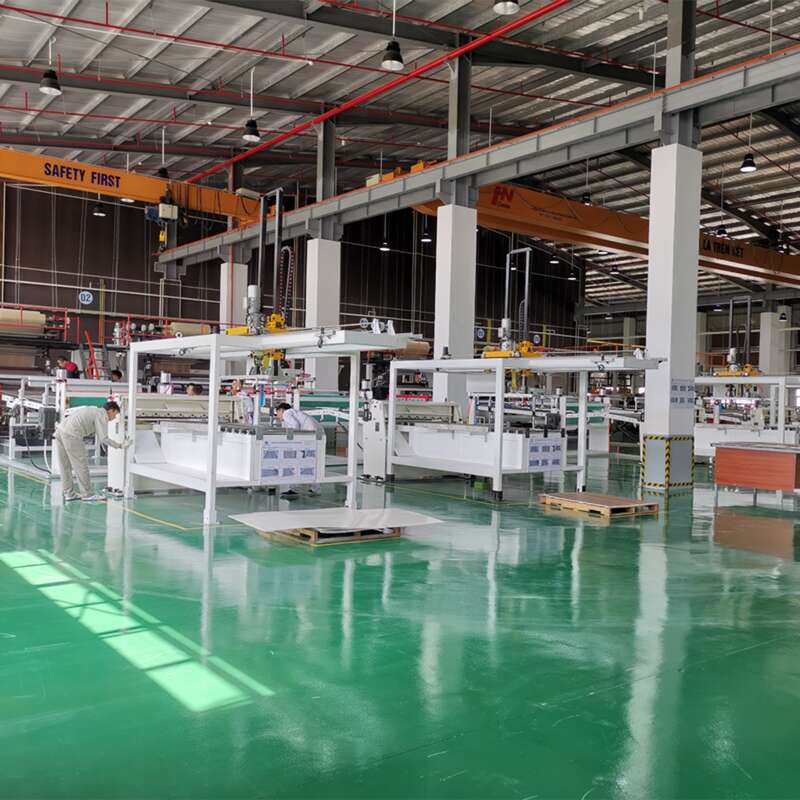
Step 1 Prepare and Mix Compound
Raw materials consisting of wood and natural fiber polymers and strictly formulated additives are assembled and entered into specific loaders for mixing.
Step 2 Extrude the mixture
Step 3 What will it produce
Step 4 Stamping, Handling, Cutting, Stacking
Afterwards, the product is rechecked, cut to the desired length, size and stacked and packaged.
plastic-wood materials manufacturing process technology
The manufacture of plastic-wood materials is different from solid wood materials, and it cannot be manufactured in full accordance with the manufacturing ideas of plastic materials. For a long time, the development of plastic wood materials has been greatly restricted by technical conditions, and the progress of materials and market demand have forced the development of plastic wood material manufacturing technology. The development of plastic wood material manufacturing technology is mainly reflected in three aspects: plate manufacturing technology, profile/profile manufacturing technology, and progress in connection and assembly technology.
WPC sheet manufacturing technology
Usually wooden materials can be divided into frame materials, plate materials, curved wood materials and special-shaped materials according to the structural form. From the perspective of replacing wood with plastic, the plastic-wood composite can be further processed into wood-like materials by manufacturing wood-plastic composite materials into boards and squares. Plastic wood panels can be used as enclosure materials such as panels and panels of frame materials, and can also be used as side panels, partitions, shelves, back panels, bottom panels, door panels and top panels of panel materials. In the 1990s, when wood-plastic composite materials were not well known, people were inspired by other wood-based panel manufacturing methods and began to use die-casting to manufacture material preforms and assemble the preforms into simple panel materials. Some people also use the method of hot pressing to manufacture the table top of the plastic wood board. In order to improve the strength of the board, a mesh layer woven from glass fibers is arranged in the middle of the board. With the production of plastic-wood extrusion technology, people began to combine single-screw extruders, twin-screw extruders and sheet molds at the beginning of this century to manufacture plastic-wood material sheets.
In order to obtain more abundant surface decoration effects, WPC surface decoration technologies such as WPC imitation marble board manufacturing technology, paintable WPC material board manufacturing technology, and color WPC manufacturing technology have all developed rapidly. The wood-plastic board does not release volatile organic gases because it does not use adhesives, which is the outstanding advantage of the wood-plastic composite material. However, in order to make the plastic wood board have better decorative properties, the surface of the plastic wood board is veneered, and it is easy to introduce adhesives and volatile gases. In recent years, the method of making veneer veneer wood-plastic composite panels without the application of adhesives has been developed. While improving the surface quality of the materials using this wood-plastic panel, the manufactured materials can be used indoors without formaldehyde, etc. Harmful gases are released. At the same time, the edge-sealing, edge-wrapping, and cladding technologies of the wood-plastic panels have also developed rapidly, and the problems of unsightly corners or low strength of the wood-plastic materials have been improved. But at the same time, it should be noted that the current plastic-wood composite materials usually need to be processed with the help of large-scale special equipment, and their processing flexibility is not high, which should be further improved.
WPC profile/profile manufacturing technology
The plastic-wood extrusion molding technology is widely used in the manufacture of profiles. Based on the processing method of extrusion molding, WPC profiles can obtain higher production efficiency, and the current manufacturing technology of WPC profiles is relatively mature. By designing different cavities for profiles and designing and improving the die, material profiles with different shapes and requirements can be produced. At present, the research and development of plastic wood profile manufacturing technology mainly focuses on formula improvement, material rheology, mold size, process parameters, cavity design and so on. Plastic-wood profiles are mainly used to manufacture backrests, legs, headboards and mirror frames, etc., and are especially suitable for making material products with baroque art style. WPC profiles can be manufactured by molding or injection molding. During compression molding, the wood-plastic composite material is first put into the mold cavity, the mold is closed, and the properties of the material are changed under the action of heat or pressure, and a shape that matches the shape of the mold is formed in the mold. Using this molding method, an organic curved surface can be produced, and the pattern texture of the surface can be processed at one time. The injection molding process is to inject the molten wood-plastic composite material into the mold cavity with high pressure, and after cooling and demoulding, it is made into a product that matches the shape of the mold. The injection molding process can obtain a variety of product shapes, which can not only be used to manufacture complete materials, but also more suitable for the manufacture of material parts with complex surfaces. However, since the fluidity of WPC melt is significantly lower than that of homogeneous plastics, injection molding or even compression molding of WPC profiles is difficult, and further research and development is required.
In order to improve the mechanical properties and durability of plastic-wood profiles and profiles, researchers have adopted methods such as embedding reinforcing ribs and plastic-wood-wrapped solid wood cores to improve the performance of plastic-wood profiles and profiles, making them more suitable for material manufacturing. . In addition, WPC relief carving technology and laser sintering technology 3D printing technology can also be used to manufacture material profiles, especially suitable for the manufacture of exquisite material decorative parts. However, at present, the manufacturing cost of profiled materials based on laser sintering and 3D printing technology is relatively high, and it is still difficult to apply them on a large scale in the material manufacturing industry.
WPC material connection and assembly technology
The structural connection and assembly of plastic-wood materials is an important issue worthy of attention in manufacturing. Material assembly needs to consider the firmness, disassembly and installation efficiency of the material. The material structure connection includes the fixed connection and movable connection between the plastic and wood components, as well as the connection between the plastic and wood components and other material components. In the structural connection of materials, in addition to considering the functional requirements of the material, the place of use and the stress, it is also necessary to pay attention to the nail holding force, supporting span, viscoelasticity and creep properties of the material. Different plastic-wood composite materials have obvious differences in their mechanical indicators, and different connection methods and structural treatment methods need to be adopted according to different materials. On the one hand, tenon joints, nail joints, riveting joints, connector joints, eccentric joints, etc., which are applicable in solid wood materials and panel materials, can be partially applied in the field of plastic-wood material manufacturing. On the other hand, it is necessary to develop high-performance welding, gluing, plug-in, screw-type connection, pull-type connection and new movable connection methods to adapt to the characteristics of plastic-wood composite materials.
The research progress on the mechanical connection, gluing, welding, and various composite connections of plastic-wood composites is also worthy of attention. Studies have shown that epoxy resin adhesives and acrylate adhesives are more suitable for the bonding of plastic-wood materials, and the plastic-wood fusion welding composite connection technology is suitable for application in materials such as doors and windows. In order to facilitate the assembly of plastic-wood materials, some companies have developed special screws and connectors for the assembly of plastic-wood materials, and some companies have used the special cavity of plastic-wood profiles and the high-strength characteristics of plastic-wood boards to design them that can be plugged. Combining various materials. However, it should also be noted that the existing connection technology of plastic-wood profiles still lacks versatility, and the research and development of the connection technology of lightweight foamed and lightweight sandwich plastic-wood panels needs to be strengthened.
